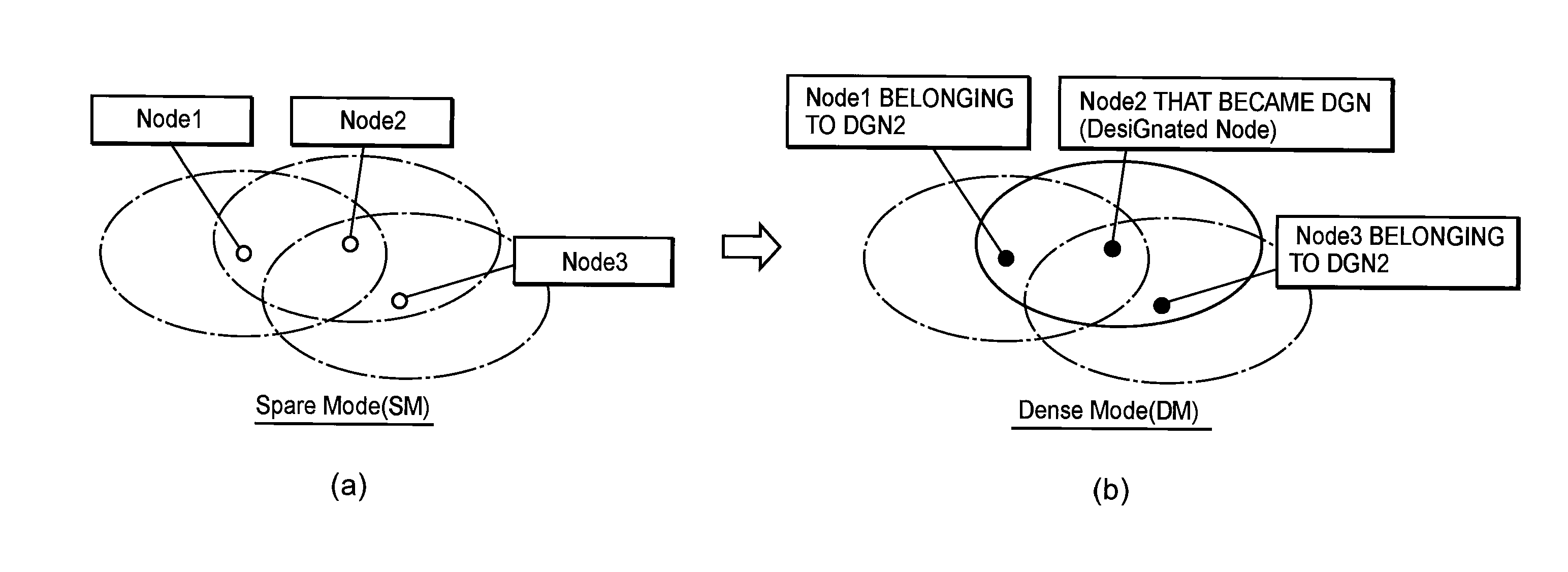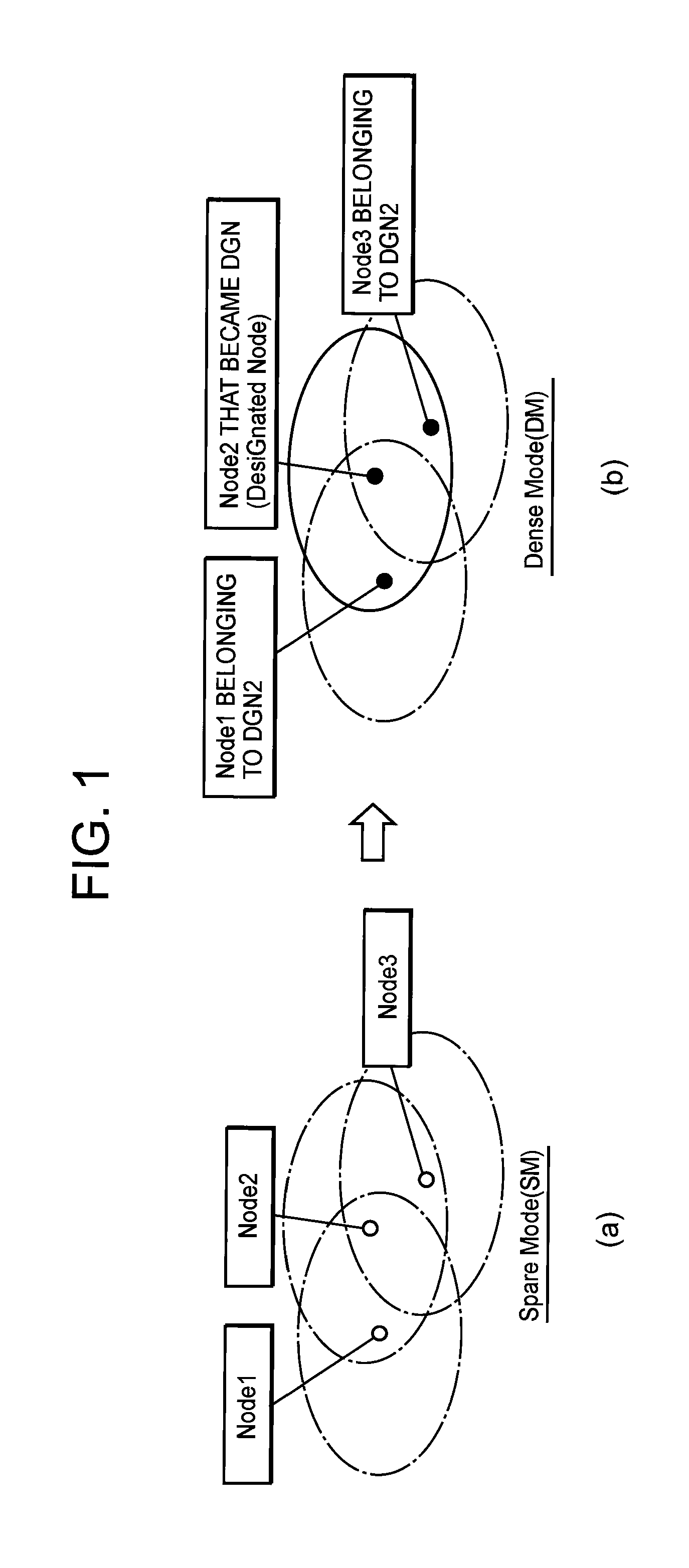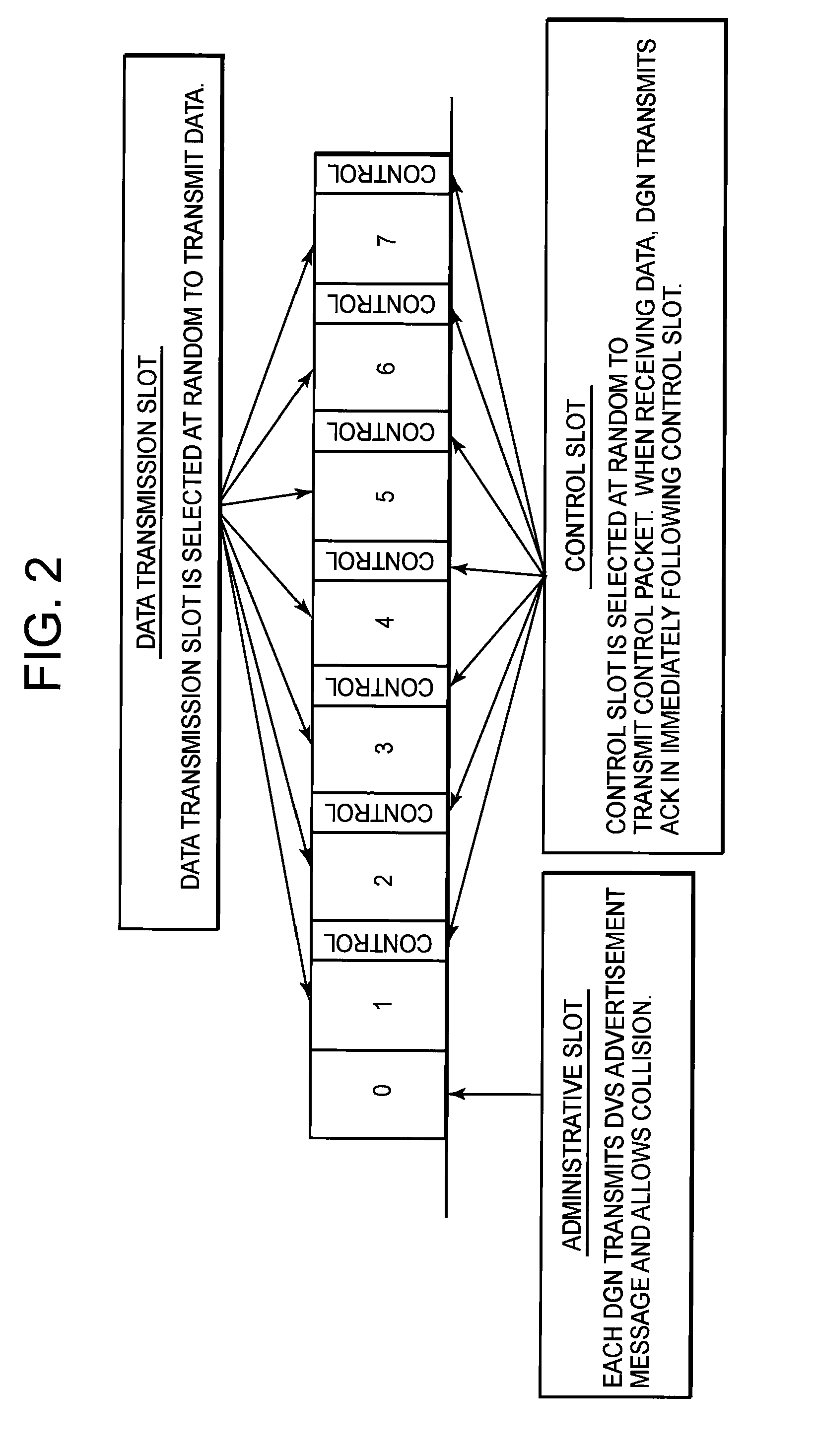Radio communication method, radio communication system, radio communication device, and congestion control method
- Summary
- Abstract
- Description
- Claims
- Application Information
AI Technical Summary
Benefits of technology
Problems solved by technology
Method used
Image
Examples
first embodiment
of Second Invention
[0299]FIG. 17, FIG. 18, and FIG. 19 are flowcharts for explaining the operation of nodes according to the first embodiment. In FIG. 17, it is first determined whether packet transmission is being stopped (step S201). If being stopped, processing proceeds to step S202, while if not being stopped, processing branches to step S205. In step S202, packet reception processing shown in detail in FIG. 18 is performed, and it is then determined whether the time slot timing is for the final slot (step S203). If it is not the timing of the final time slot, processing returns to step S201, while if it is the timing of the final time slot, processing proceeds to S204 to perform extension control processing shown in detail in FIG. 19, and processing returns to step S201. Since the extension control processing is performed by using all the processing results of collisions detected in each time slot and collision advertisement messages 201 received in each time slot within one ac...
second embodiment
of Second Invention
[0310]In the first embodiment of the second invention, the next active period AP is extended when a collision has been detected. On the contrary, in the second embodiment of the second invention, the current active period AP is extended when a collision has been detected. The second embodiment of the second invention will be described with reference to FIGS. 21 to 24. In this embodiment, although the number of time slots within a normal active period AP and the number of time slots within an extended active period AP are expressed in specific figures as (time slots=0, 1, . . . , 7) and (time slots=0, 1, . . . , 15), respectively, this invention is not limited thereto. In FIG. 21, S205a is added between step S205 and step S206 shown in FIG. 17, step S209a is added between S209 and steps S210, S212, and processing in step S221a is different from step S221 shown in FIG. 17. As a result of judgment in step S205 as to whether the active period AP is currently extended,...
PUM
 Login to View More
Login to View More Abstract
Description
Claims
Application Information
 Login to View More
Login to View More - R&D
- Intellectual Property
- Life Sciences
- Materials
- Tech Scout
- Unparalleled Data Quality
- Higher Quality Content
- 60% Fewer Hallucinations
Browse by: Latest US Patents, China's latest patents, Technical Efficacy Thesaurus, Application Domain, Technology Topic, Popular Technical Reports.
© 2025 PatSnap. All rights reserved.Legal|Privacy policy|Modern Slavery Act Transparency Statement|Sitemap|About US| Contact US: help@patsnap.com



